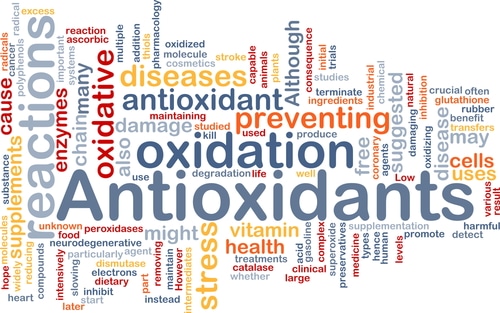
Back to Chemistry Class
To have a working knowledge of free radicals, you must first have a basic understanding of life at the cellular level. The body is composed of cells and cells are composed of molecules which consist of atoms joined by chemical bonds. Atoms have protons, electrons, neutrons, and a nucleus. Electrons fill the outer shells of atoms and are the bonding agents in chemical reactions. Electrons are the most important structures in terms of determining an atom’s chemical behavior. The nature of an atom is to seek stability and it does so by either gaining or losing electrons or by sharing electrons forming a bond.
Ordinarily, bonds between atoms don’t split in a way that leaves a molecule with unpaired electrons, but when they do, free radicals are formed. As the name implies, free radicals are unstable and seek to acquire electrons in order to regain some stability. To do this, free radicals rob the electrons from neighboring molecules. When the damaged molecule loses an electron, it becomes a free radical and a chain reaction ensues.
Some free radical activity is normal and occurs during usual metabolic processes. However, when free radicals are produced by factors such as poor nutrition, pollution, radiation, and toxic chemicals, a diseased environment is often the result.
The Antioxidant Solution
Nutrition plays a key role in neutralizing free radical activity. Nutritional elements like vitamins counter free radical damage and stop the chain reaction by donating their electrons. Since the antioxidant nutrient is stable even after their generous donation, they don’t add to the problem by becoming free radicals. Essentially, vitamins act like biological police, preventing and suppressing the chain reactions caused by free radicals throughout the body. Vitamins C, E, and beta-carotene – a precursor to vitamin A – are among the most important micronutrients. Interestingly, these nutrients must be supplied by the diet because the human body cannot manufacture them.
• Vitamin C. Also known as ascorbic acid, vitamin C is a water-soluble vitamin present in citrus fruit, green peppers, dark green vegetables, cantaloupe, and kiwi.
• Vitamin E. A fat-soluble micronutrient, vitamin E is obtained by eating a diet rich in nuts, seeds, fish oil, and whole grains.
• Beta-carotene. A precursor to vitamin A, beta-carotene can be found in foods like carrots, egg yolks, squash, peaches, and milk.
Because of the important interaction between free radicals and antioxidants, there is a good reason to heed the advice to eat a balanced diet rich in fruits and veggies.
Related Articles By Cathe:
5 Common Myths about Vitamins We Should All Stop Believing
Do Antioxidants Interfere with Fitness Gains?
Is Tea a Reliable Source of Antioxidants?
Can You Get Too Many Antioxidants?
5 Myths About Antioxidants You Should Know About
More Antioxidants Than Vegetables? Here’s Why You Need to Add More Herbs to Your Food

